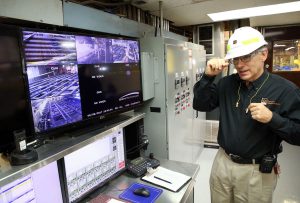EJ Americas Begins Construction on New Iron Foundry
EJ Americas, a global organization producing and distributing iron castings for municipal and infrastructure programs, broke ground in July for a greenfield foundry being built in Elmira, Michigan, 20 miles east of its current and original location in Warner Township. The new foundry is expected to be in operation by Fall 2018.
Founded in 1883 and previously known as East Jordan Iron Works and rebranded as EJ in 2011, the foundry has an operation that includes a cupola melting shop for ductile iron, three molding lines — automated green-sand molding, no-bake molding, and HWS molding for parts up to 76×60 in. EJ provides castings to the agricultural, forestry, marine and railroad industries, with a niche as a supplier of castings for water, sewer, and drainage systems and telecom and utility networks, and is best known for its production of manhole and utility covers, drainage grates, warning plates, tree grates, fire hydrants, grate valves and other specialized castings.
At the current location, the foundry has automated finish machining, coating, and assembly and testing for fire hydrants and valves. The new foundry in Michigan will expand casting capabilities, although specific details about the melting and casting operation have not been released. The company has a second U.S. plant in Ardmore, Oklahoma, and a network of foundries in Australia, Canada, France, and Ireland. The corporate headquarters, pattern shop, product development group, water products, and regional sales office will remain in East Jordan.
EJ Americas Begins Construction on New Iron Foundry Read More »




